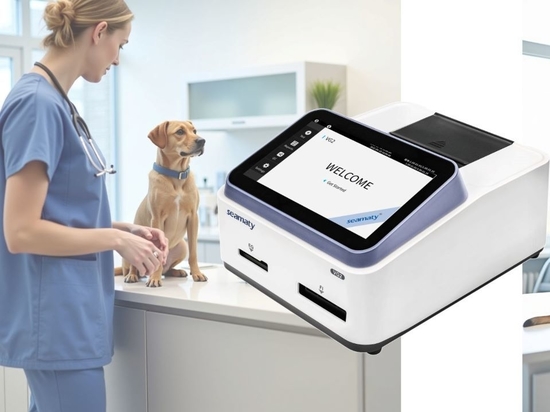
#Industry News
Seamaty SD3 vs. Traditional Chemistry Analyzers: Why SD3 Wins
Seamaty SD3
For decades, traditional chemistry analyzers have been the workhorses in laboratories. However, the Seamaty SD3 has emerged as a revolutionary alternative. This article aims to compare the SD3 with traditional chemistry analyzers and highlight why the SD3 is the superior choice.
1. Accuracy of Results
①Seamaty SD3
The Seamaty SD3's microfluidics technology is at the heart of its remarkable accuracy. This advanced technology allows for precise handling of whole blood, serum, and plasma. The patented single-use reagent discs are another key factor. Their design ensures that each test is conducted with high precision, providing consistent and reliable measurements. Multiple studies have shown that the SD3 can achieve an accuracy level that rivals, if not surpasses, traditional analyzers.
②Traditional Chemistry Analyzers
Traditional analyzers typically rely on well-established but sometimes less precise methods for sample analysis. Sample handling can be a significant source of error. Issues such as improper calibration and reagent instability can also affect the accuracy of results. In many cases, research has demonstrated that traditional analyzers may not provide the same level of accuracy as the SD3 dry chemistry analyzer, especially in complex or challenging sample scenarios.
2. Speed of Analysis
①Seamaty SD3
The SD3's 4-step operation process is a game-changer. It simplifies the analysis procedure and enables quick turnaround times. The design of the reagent discs and the internal mechanisms of the analyzer work in harmony to rapidly process samples. Data shows that for various types of tests, the SD3 can complete analyses in a fraction of the time compared to traditional methods.
②Traditional Chemistry Analyzers
Traditional analysis methods often involve complex workflows with numerous time-consuming steps. Sample preparation can be elaborate, and reaction times may be longer. Bottlenecks in the process, such as the need for multiple manual interventions, can significantly slow down the overall speed of analysis. When compared to the SD3 using industry-standard tests, traditional analyzers fall behind in terms of speed.
3. Cost-effectiveness
①Seamaty SD3
The single-use reagent discs of the SD3 offer long-term cost-effectiveness. They eliminate the need for extensive and costly maintenance associated with traditional analyzers. There's no need for regular and elaborate cleaning or calibration procedures that are common with traditional systems. When considering the overall cost per test, including reagent consumption, equipment depreciation, and labor, the SD3 proves to be a more economical option.
②Traditional Chemistry Analyzers
Traditional analyzer reagents come with their own set of costs. Storage requirements, disposal issues, and potential waste due to reagent instability can add up. Additionally, maintenance and repair costs, including regular calibration, replacement of parts, and servicing, can be substantial. Over a specific period, the total cost of ownership of traditional analyzers is often higher than that of the SD3.
4. Ease of Use
①Seamaty SD3
The simplicity of the SD3's 4-step operation cannot be overstated. Its user-friendly design includes an intuitive interface that requires minimal training for laboratory staff. The straightforward operation allows for easy integration into existing laboratory workflows, reducing the learning curve and potential for errors.
②Traditional Chemistry Analyzers
Operating traditional analyzers can be complex. Specialized training is often required for sample preparation, instrument operation, and result interpretation. Adjusting these analyzers for different types of tests or samples can be challenging, leading to a steeper learning curve and increased complexity compared to the SD3.
5. Sample Compatibility and Versatility
①Seamaty SD3
The SD3's ability to handle whole blood, serum, and plasma with ease is a significant advantage. Moreover, it can accommodate additional sample types and special conditions. The flexibility of the reagent discs allows for a wide range of tests to be performed on different samples, making it a versatile choice for various laboratory needs.
②Traditional Chemistry Analyzers
Traditional analyzers have limitations when it comes to the types of samples they can handle. Adapting them to new or unusual sample matrices can be difficult, restricting their versatility compared to the SD3.





